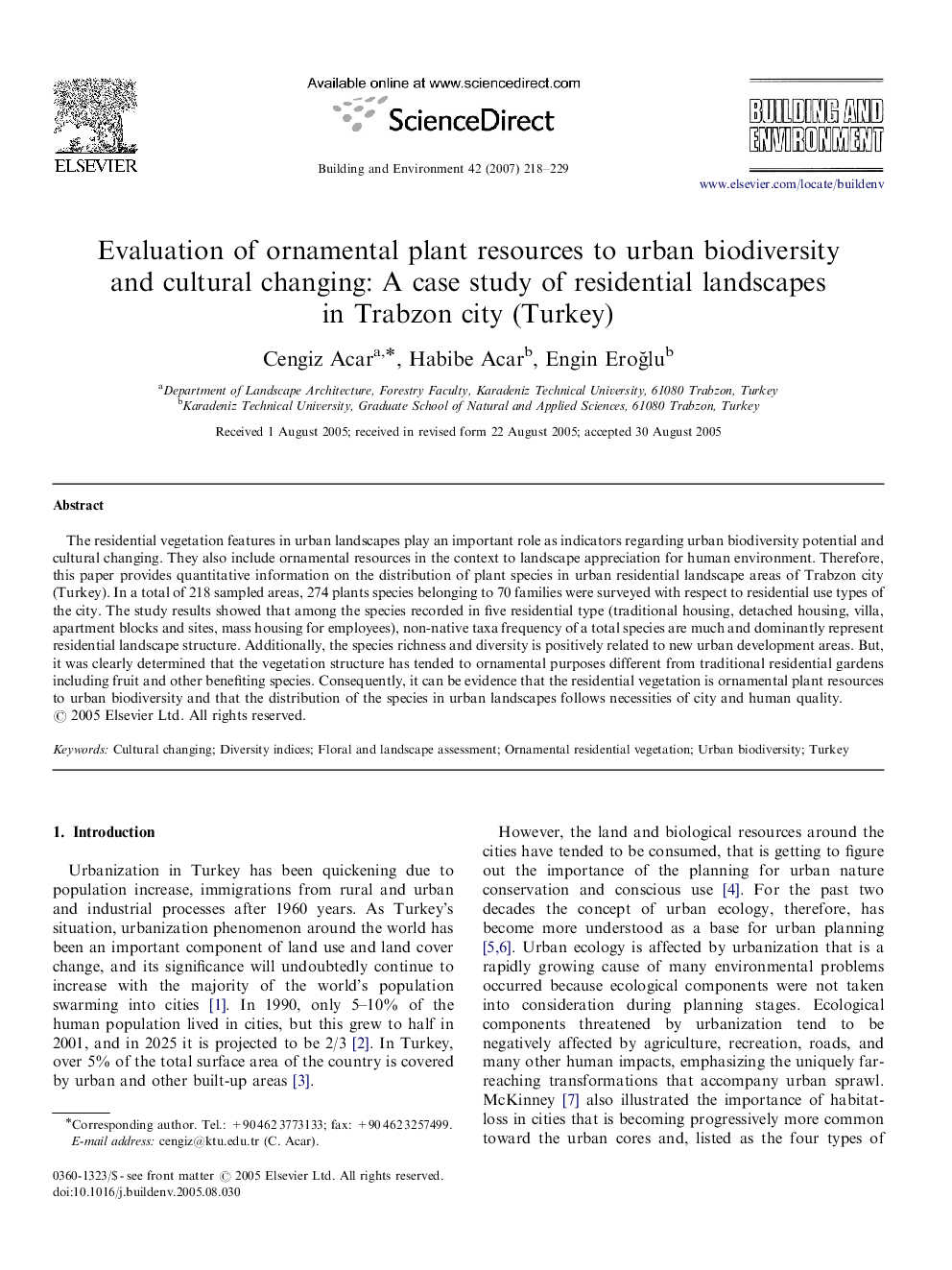| Article ID | Journal | Published Year | Pages | File Type |
|---|---|---|---|---|
| 249433 | Building and Environment | 2007 | 12 Pages |
The residential vegetation features in urban landscapes play an important role as indicators regarding urban biodiversity potential and cultural changing. They also include ornamental resources in the context to landscape appreciation for human environment. Therefore, this paper provides quantitative information on the distribution of plant species in urban residential landscape areas of Trabzon city (Turkey). In a total of 218 sampled areas, 274 plants species belonging to 70 families were surveyed with respect to residential use types of the city. The study results showed that among the species recorded in five residential type (traditional housing, detached housing, villa, apartment blocks and sites, mass housing for employees), non-native taxa frequency of a total species are much and dominantly represent residential landscape structure. Additionally, the species richness and diversity is positively related to new urban development areas. But, it was clearly determined that the vegetation structure has tended to ornamental purposes different from traditional residential gardens including fruit and other benefiting species. Consequently, it can be evidence that the residential vegetation is ornamental plant resources to urban biodiversity and that the distribution of the species in urban landscapes follows necessities of city and human quality.
